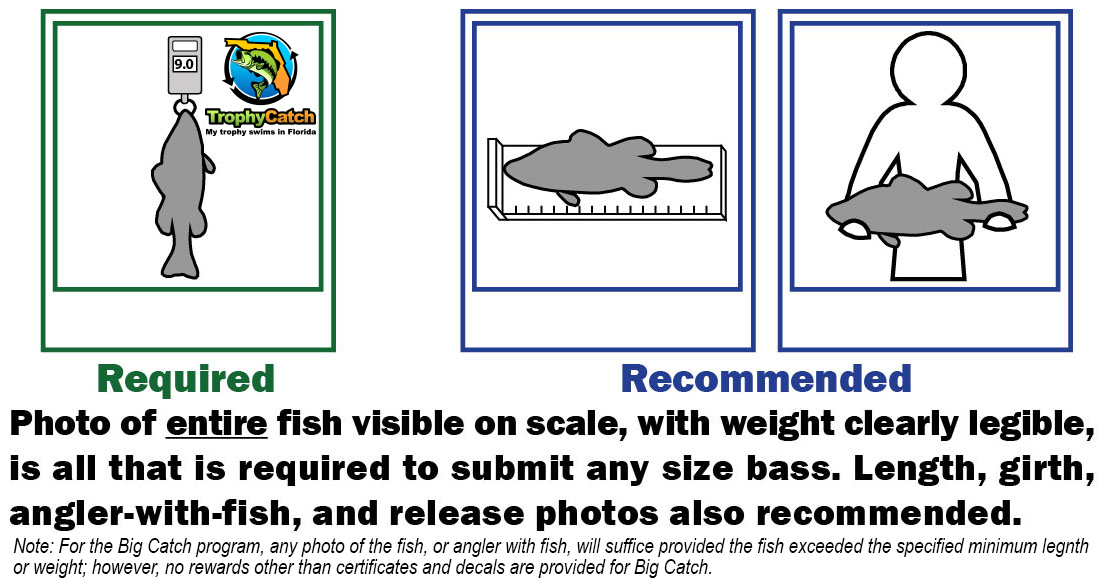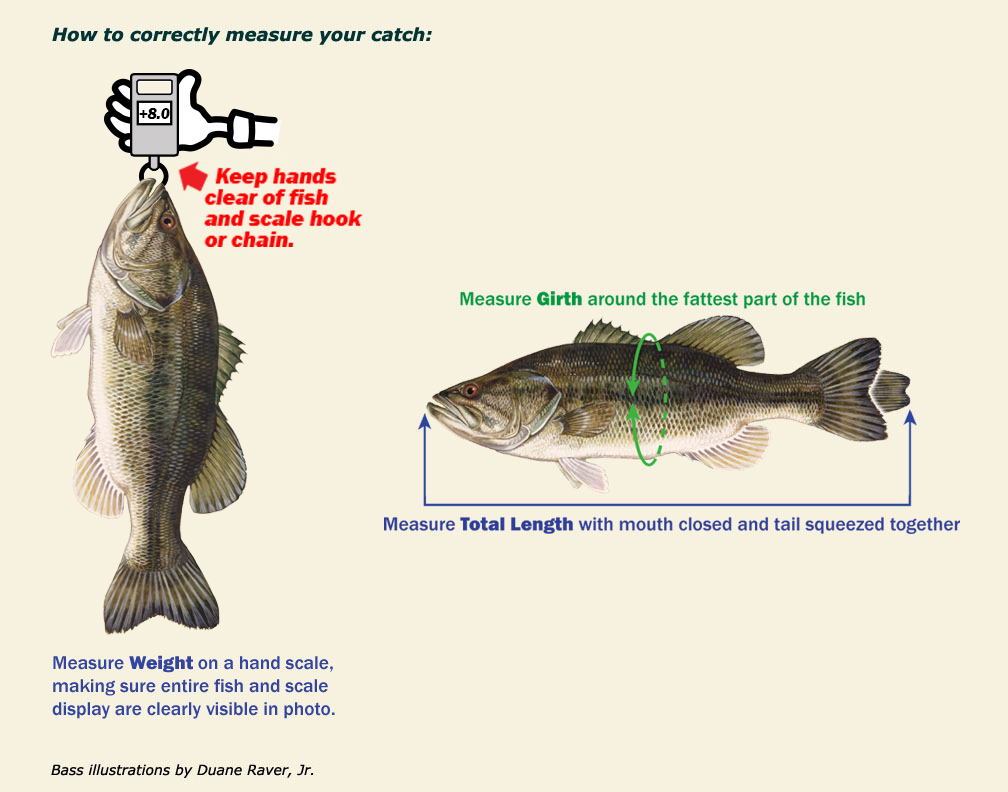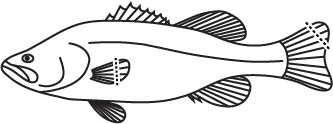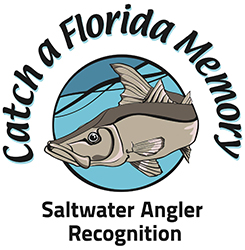Frequently Asked Questions
- Submit high resolution photographs or videos (good overall clarity, 3-megapixel camera or above recommended)
- Submit at least one photograph or video of the whole fish (head to tail) on a scale with the weight clearly visible
- Anglers are encouraged to submit two to three additional photographs of the fish
Suggested supplemental photos are:
- the whole fish on a measuring board with the length clearly visible
- a close-up on scale with at least half of the bass visible
- the fish being measured for girth
- the fish being released
- the angler with their catch (please remove sunglasses)
Unlike Big Catch, this detailed documentation is required to justify the cash prizes and to ensure valid data for research and conservation management programs. Bass that are not adequately documented for TrophyCatch will be considered for a Big Catch certificate.

You can register once for both TrophyCatch and Big Catch on the registration page. The first section of the registration form allows you to simply enter your FWC customer number (sometimes called your fishing license number found at the top of your license) and date of birth. Doing so will automatically fill in your name, address, phone number, and other relevant information, saving you time.
If you do not have your FWC customer number handy, you can look it up online, here. Select: "Where can I view my current hunting and fishing licenses?" When reviewing your license, be sure to check that your license contains your correct date of birth.
If you do not have a fishing license or have an exemption, you may bypass the first section and manually input the rest of your information into the registration form. Once the registration form is completed you will be prompted to identify your license exemption. Please remember, although you are not required to have a license to register, you must have a license to participate.
The FWC also has a free Fish|Hunt License App for Androids or Apple smartphones that you can use to purchase or renew your license and keep all your information up-to-date. It even serves as a legal copy of your license if you need to show it to a conservation officer.
If you are experiencing problems registering or submitting a catch, some of the first and simplest things to do are:
- Quit and restart your browser to try again.
- Press the <CTRL><R> keys simultaneously to refresh the web page you are working in.
- Try a different browser. Google Chrome works well for most users.
- Try using the TrophyCatch App rather than your web browser.
The above steps are some of the first and quickest steps to try. If you are still having trouble, email TrophyCatch@MyFWC.com or call the TrophyCatch Hotline at 1-855-FL-Trophy (1-855-358-7674).
In many instances a tournament angler can provide a photo/video of the bass on the scale with the weight visible, and that is preferable. However, other options exist when properly documented:
- Anglers who catch a fish in a tournament that are eligible for TrophyCatch can submit a photo of him/her holding the fish, but must also provide a link to a public website that provides information on the weight of the individual fish and angler (e.g., tournament website, social media, newspaper, or magazine article). A specific link (URL) should be provided to the website page where the angler's name, weight of the fish, date, and tournament location.
- Anglers in major tournaments that provide scale receipts listing the name, location, and date of the tournament, along with the angler's name and weight of the individual fish, may submit an unaltered copy of the weight verification as one of their photographs.
- If an FWC biologist or volunteer is present at the tournament and witnesses the weight, the angler will only have to submit a picture of him/her holding the fish and indicate it was verified by an FWC biologist or volunteer and include the FWC representative’s name in the submission application. Pictures/videos of the fish on the scale, measuring board, or additional photos of the fish are recommended but not required if witnessed.
- Designated tournament directors may document the catch by communicating official tournament results to TrophyCatch Staff (TrophyCatch@MyFWC.com).
- Please visit section 1.B of the Rules for more information on tournament catches.
Processing time for catches submitted to the site varies. You should receive a follow-up email within 5 to 7 business days. There are several variables involved in the process; however, having "tail to scale" documentation of the entire bass on a scale with the weight clearly legible, significantly shortens the review time.
When your catch is approved, you will receive an approval email outlining your prizing, and it will guide you on which prizes require you to take action and which need no action. Some Hall of Fame awards are not issued until after the end of the season, or at the year-end awards event.
Our goals are to:
- Collect valid information through citizen-science about trophy bass to help the FWC better enhance, conserve, and promote trophy bass fishing.
- Encourage catch-and-release of the biggest, oldest, most valuable bass.
- Excite anglers about Florida freshwater fishing, encouraging them to purchase licenses and fish more, resulting in benefits to anglers, fishing-related businesses, local communities, and the fisheries by having more support and funding for conservation.
- Share information about fishing opportunities and destinations to make fishing more enjoyable.
Total length is the maximum length of the fish when the mouth is closed and the tail (caudal) fin is pinched together. The best way to obtain this length:
- Lay the fish on a cool, smooth, wet measuring board (bump board) to minimize stress/discomfort and decrease damage to or removal of the slime coat
- Push the fish's snout up against a vertical surface with the mouth closed
- Pinch the tail fin together to determine the total length
- Center the camera above the bass at a distance of 3 feet or higher. Double check your length photos to ensure the length readings are clearly legible
- Do NOT pull a flexible tape measure along the curve of the fish. See image below for taking a proper length measurement. Please visit the TrophyCare page for more detailed information.

"Girth" is best measured with a fabric ruler, such as tailors use. It can also be determined by wrapping a string around the fish at its widest point, marking where the string overlaps, and then measuring the string. Knowing the girth is important when trying to certify a fish and provides useful information to biologists about the relative condition of a fish. If you have a live well, the measurement can be taken underwater. See image below for taking a proper girth measurement. Please visit the TrophyCare page for more detailed information.

- Plan ahead—before you remove the fish from the water, have your dehooker, measuring devices, and camera ready—remember, the fish should not be out of the water longer than you can hold your breath.
- Use barbless hooks or mash the barb down. Circle hooks can be especially beneficial, and do not use stainless steel.
- Strike quickly when a fish takes your bait or lure to reduce the chance of it swallowing the hook.
- Play fish rapidly, the longer and harder it fights the greater stress on them.
- Do not use gaffs or knotted nets, and wet both hands before handling the bass. If you need to hold the fish horizontally grasp it firmly by the lower jaw and gently under the stomach with a wet hand. Minimize disturbing the slime coat, which protects the fish from infection.
- Keep the fish out of the water for as short a time as possible—no longer than 30 seconds. If the hook does not come out easily, use a dehooking tool. If the hook has been swallowed, cut the line. Stomach acid will dissolve the hook.
- Do not use fish stringers. If in a kayak or canoe and you need to keep the fish alive, floating knotless net baskets may be used.
- Ensure live wells have fresh lake/river water (not tap water) and if possible, run an aerator. Water should be at the same temperature as where the fish was removed from or slightly cooler.
- When releasing the fish, place it gently in the water headfirst, and use your other hand to support its belly. If necessary, move the fish in a gentle figure eight to pass water over the gills (do not pull it backwards).
Please visit the TrophyCare page for more detailed information.
TrophyCatch rules allow photo/video documentation and immediate release of all bass which is in compliance with catch-and-release regulations. Please visit the Rules for more information.
The FWC requests your help in collecting Florida largemouth bass genetics data. The role genetics plays in bass growth rates within the natural population in a waterbody is not well understood. New research could lead to the opportunity to fish a waterbody specifically stocked with a population of bass genetically predisposed to grow larger than other bass in a faster time frame!
Here’s What You Need To Do!
1. For each TrophyCatch bass submitted, carefully remove a small piece of either the tip of the pectoral fin (the fin closest to the gill covering), or the upper tip of the tail fin using fingernail clippers or scissors. The fin clip needs to be approximately the size of the fingernail on your pinkie (smallest) finger. See the below graphic with clipping locations as dotted lines.

2. For the DNA to be usable, the fin clip will need to air dry completely, but do NOT place the fin clip in a plastic bag (zip lock baggie or old plastic worm bag).
3. Store the fin clip in a lower humidity or air-conditioned area to allow it to fully dry out. It can be placed in a paper envelope for drying.
4. Once completely dry (the fin tissue will be rigid and not slimy), the fin can be inserted in a regular envelope and mailed to the FWC. Each fin clip submission needs:
- Your name and phone number
- The waterbody name and county that the bass was caught in
- The catch date
- Your catch ID after submitting your bass to TrophyCatch
- Once you’ve completed the information, the fin clip can be sealed in a regular envelope and mailed to:
Florida Bass Conservation Center
Florida Fish and Wildlife Conservation Commission
3585 County Road 788
Webster, FL 33597
If you need to make any changes to a submitted catch simply reply back to the Submission Received email with your changes or email the changes you would like made to the submission to TrophyCatch@MyFWC.com referencing your Catch ID # (CID).
Yes, visit CatchaFloridaMemory.com to learn more or participate in several different recognition categories including Saltwater Fish Life List, Saltwater Reel Big Fish, and Saltwater Grand Slams.
